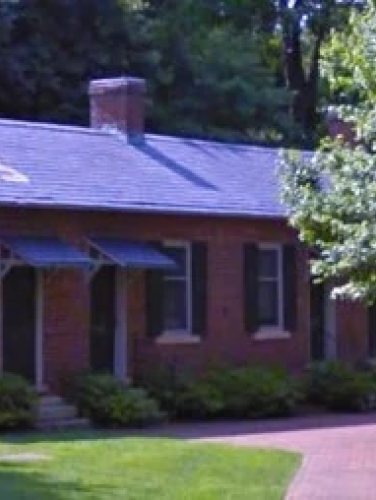
Elm Row
(ca. 1837)
Elm Row is one of two remaining buildings that date back to the earliest days of Davidson College.
306 N Main St, Davidson, NC 28036
Along with its sister building Oak Row, Elm Row constitutes part of the original Quadrangle of the Davidson College campus. As two of the campus’ eight original buildings, the small four-room structures were erected shortly before the college opened its doors to students in March 1837. Both buildings served initially as dormitories. The eight original campus building were constructed of some 250,000 bricks purchased from the kiln of Major John Caldwell at a cost of four dollars per thousand. Of those first eight buildings, only Elm Row and Oak Row remain, and they have been in constant use since their completion.
Property Quick Links
Lying further from North Main Street than its counterpart, Elm Row originally stood between Steward’s Hall (a dining commons and classroom building) to the right or south and Tammany Hall (a two-story professor’s house) to the left or north. Neither of those two structures remains. Elm Row was moved a few feet southward in the 1960s. Four students were assigned to each of Elm Row’s four original rooms. The two buildings have served numerous purposes over the years, including as the campus infirmary, fraternity houses, student organization offices, the home of the college’s Music and Art departments, and meeting and classroom space.
The style and placement of the buildings suggest that the founders of Davidson College hoped to duplicate the ambience of Thomas Jefferson’s famous “Lawn” at the University of Virginia. The exteriors of the buildings retain their original Jeffersonian Classical features, but the interiors of the structures have been altered extensively over the years. Elm Row and Oak Row are two of the five extant antebellum structures – including President’s House, Philanthropic Hall, and Eumenean Hall – on Davidson’s campus. Elm Row and Oak Row were placed on the National Register of Historic Places in 1977.

